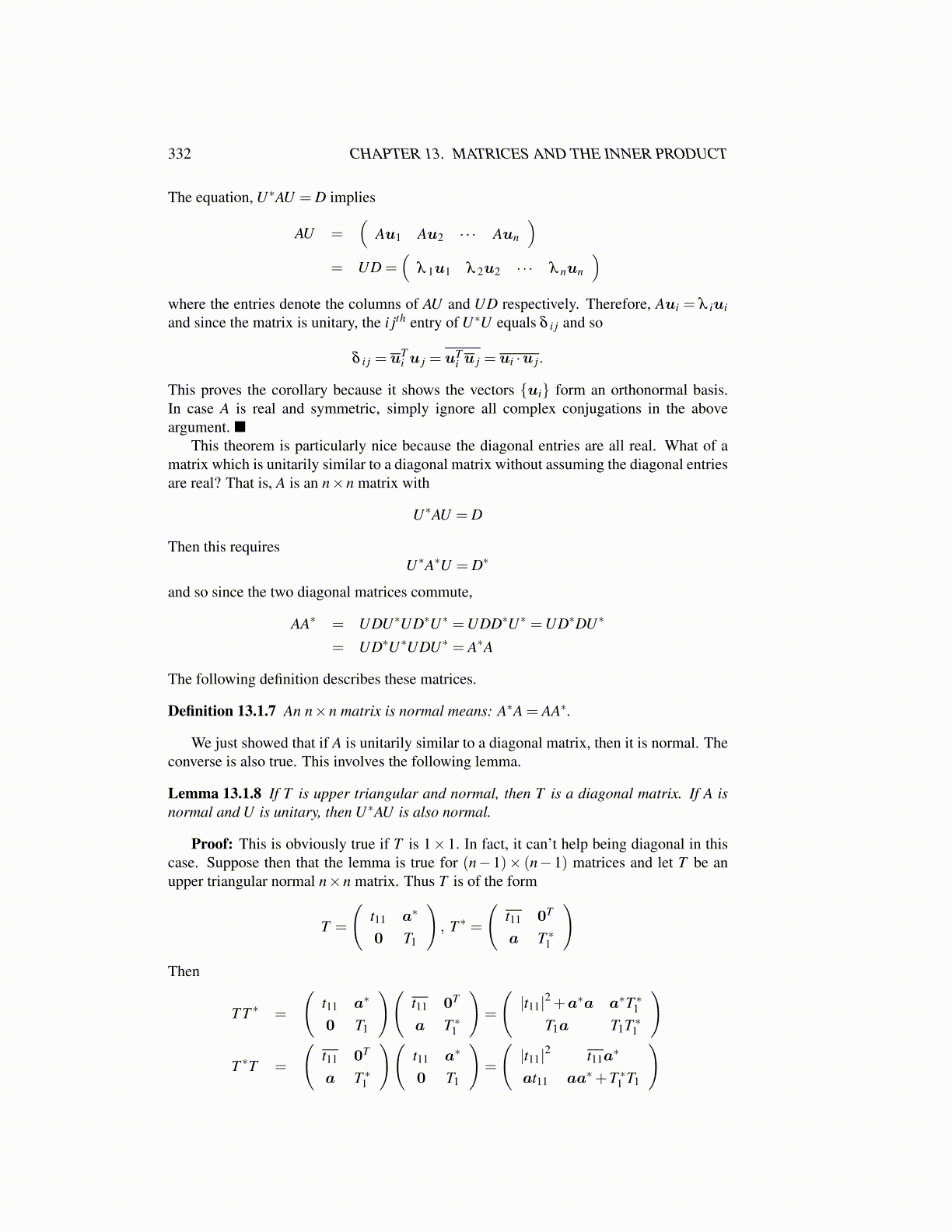
332 CHAPTER 13. MATRICES AND THE INNER PRODUCT
The equation, U∗AU = D implies
AU =(
Au1 Au2 · · · Aun
)= UD =
(λ 1u1 λ 2u2 · · · λ nun
)where the entries denote the columns of AU and UD respectively. Therefore, Aui = λ iuiand since the matrix is unitary, the i jth entry of U∗U equals δ i j and so
δ i j = uTi u j = uT
i u j = ui ·u j.
This proves the corollary because it shows the vectors {ui} form an orthonormal basis.In case A is real and symmetric, simply ignore all complex conjugations in the aboveargument. ■
This theorem is particularly nice because the diagonal entries are all real. What of amatrix which is unitarily similar to a diagonal matrix without assuming the diagonal entriesare real? That is, A is an n×n matrix with
U∗AU = D
Then this requiresU∗A∗U = D∗
and so since the two diagonal matrices commute,
AA∗ = UDU∗UD∗U∗ =UDD∗U∗ =UD∗DU∗
= UD∗U∗UDU∗ = A∗A
The following definition describes these matrices.
Definition 13.1.7 An n×n matrix is normal means: A∗A = AA∗.
We just showed that if A is unitarily similar to a diagonal matrix, then it is normal. Theconverse is also true. This involves the following lemma.
Lemma 13.1.8 If T is upper triangular and normal, then T is a diagonal matrix. If A isnormal and U is unitary, then U∗AU is also normal.
Proof: This is obviously true if T is 1× 1. In fact, it can’t help being diagonal in thiscase. Suppose then that the lemma is true for (n−1)× (n−1) matrices and let T be anupper triangular normal n×n matrix. Thus T is of the form
T =
(t11 a∗
0 T1
), T ∗ =
(t11 0T
a T ∗1
)Then
T T ∗ =
(t11 a∗
0 T1
)(t11 0T
a T ∗1
)=
(|t11|2 +a∗a a∗T ∗1
T1a T1T ∗1
)
T ∗T =
(t11 0T
a T ∗1
)(t11 a∗
0 T1
)=
(|t11|2 t11a
∗
at11 aa∗+T ∗1 T1
)